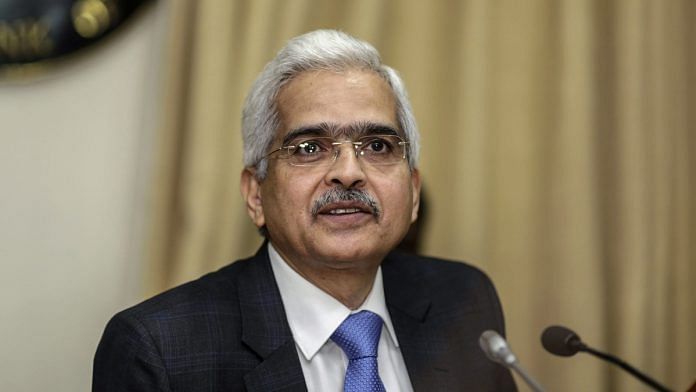Beijing: India’s central bank chief said the expansion of the world’s fastest-growing major economy needs to pick up to around 8 percent to deal with poverty and other challenges.
While the past few years’ average growth of around 7.5 percent was impressive, “the expectation is India can be better,” Reserve Bank of India Governor Shaktikanta Das said at an International Monetary Fund event in Washington on Friday. He also said more structural reforms were needed in areas such as land and labor.
India is expected to post real economic growth of 7.2 percent in the 2019-2020 fiscal year, and is seeing below-target inflation even as rising oil prices add an upside risk, the governor said. Still, he added that the inflationary impact from spikes in crude — India’s biggest import — can be exaggerated.
Also read: RBI’s second rate cut comes amid slowdown of world’s fastest growing economy
“If there is a temporary spike of oil prices and again it comes down, then obviously the impact gets moderated,” Das said. Any “sustained increase in crude prices will definitely have an impact on inflation, but we have to see how sustained it is.”
Higher oil prices over the longer term may hurt India’s growth as well as its current account deficit, factors which would drag the rupee down. The recent oil spike is occurring against a backdrop of consumption suffering from a crisis in the shadow banking sector and exports stagnating amid a global slowdown — all of which has seen India’s growth prospects dim.
The RBI reduced interest rates by a quarter-percentage point last week, the second cut in as many meetings chaired by Das who took charge in December after Urjit Patel’s sudden resignation. Despite the easing, the central bank still retained its neutral policy stance.
“Our priority is to remain watchful and take coordinated action to revive growth, and maintain macroeconomic, financial and price stability,” he said in Washington.
The central bank last week lowered the growth forecast for the fiscal year that began April 1 to 7.2 percent from 7.4 percent seen previously. It also expects headline inflation and underlying price pressures to remain subdued in coming months, giving it some more room to lower rates.
Also read: RBI has begun monetary policy easing, it must now focus on financial sector reforms
India has one of the highest real rates of interest in Asia and that’s often been cited as a reason why investors hold back. Companies have also shied away from borrowing ahead of a general election campaign that kicked off April 11. The results will be known May 23.




Robbing Peter to pay Paul ? The Great Demonetisation Expert.
With the new methodology, that translates into 10%.
Shaktikanta Das has overstayed his welcome. He was a student of history, and that’s where he belongs.